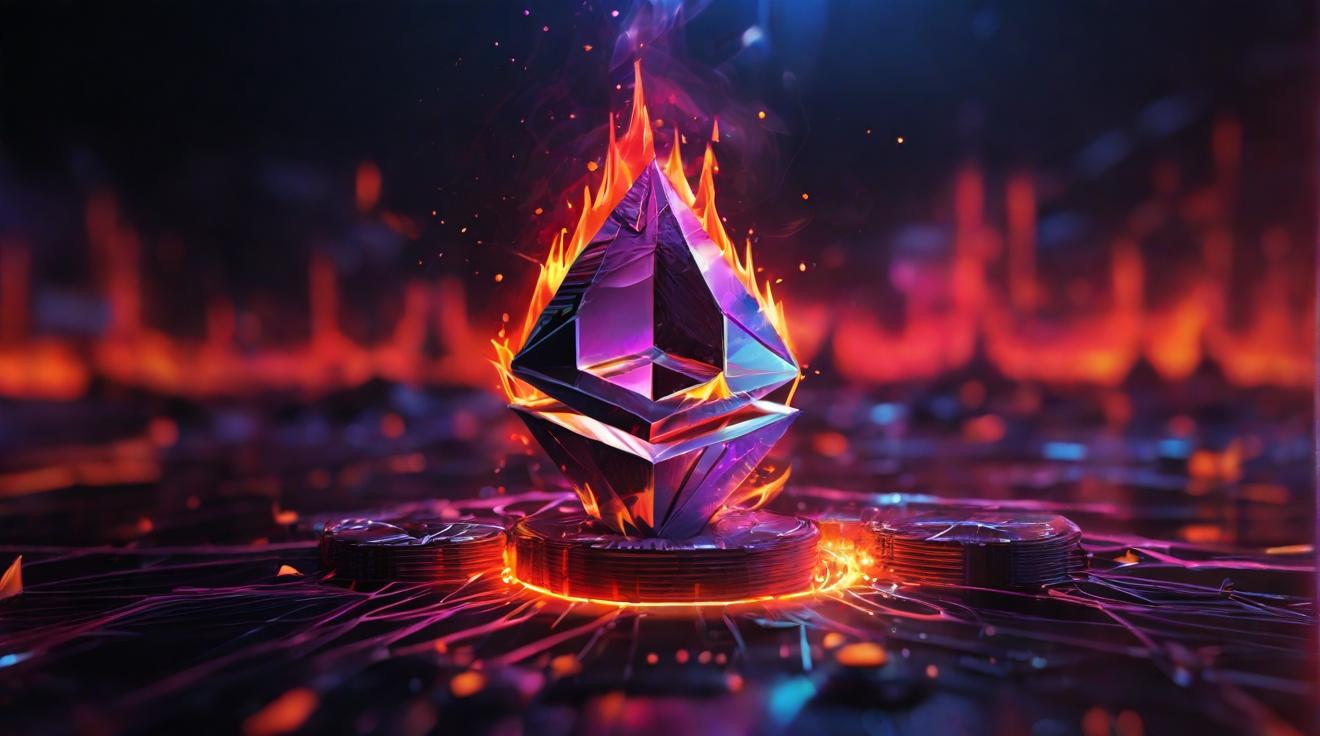Ethereum Burning: Process, Significance, and Recent Developments
By [Your Name]
Ethereum, the ever-popular digital asset and blockchain platform, has a unique procedure called burning, which involves sending ETH tokens to a designated address for permanent removal from circulation. This address, known as the burn address, is 0x0000000000000000000000000000000000000000 and plays a significant role in managing Ethereum’s supply.
Notably, the burn address does not possess a private key, making any tokens sent there virtually unretrievable. The purpose of burning Ethereum tokens is to control the circulating supply, an essential aspect of managing the overall value and stability of the ecosystem.
Currently, according to data from Etherscan, the burn address holds over 13,300 ETH. This burning process has been an integral part of the Ethereum ecosystem since its inception. However, a significant development took place in 2021 with the introduction of Ethereum Improvement Proposal (EIP) 1559.
EIP-1559 introduced a new mechanism for burning ETH by incorporating the base fee of each transaction into the process. As a result, the base fee is automatically sent to the null address, strengthening Ethereum’s deflationary infrastructure. This development aims to enhance predictability in Ethereum fees and secure the asset’s value over time.
The implementation of EIP-1559 demonstrates Ethereum’s commitment to improving its blockchain infrastructure and maintaining a robust financial ecosystem for its users. By burning ETH and reducing the circulating supply, the ecosystem aims to create scarcity and bolster the token’s value in the long run.
Ethereum burning not only enables efficient supply management but also contributes to the overall sustainability and longevity of the platform. As the Ethereum ecosystem continues to evolve, burning will likely remain an essential mechanism for controlling supply and supporting the asset’s growth.
Disclaimer: This information should not be construed as financial advice. Cryptocurrency investments are subject to market risks, and readers are encouraged to conduct their own research before making any investment decisions.
Analyst comment
Overall, this news can be evaluated as positive for the Ethereum market. The burning process and the introduction of EIP-1559 demonstrate Ethereum’s commitment to improving its infrastructure and maintaining a robust financial ecosystem. Burning ETH and reducing the circulating supply aim to create scarcity and bolster the token’s value in the long run. As a result, this development can potentially have a positive impact on the Ethereum market.













